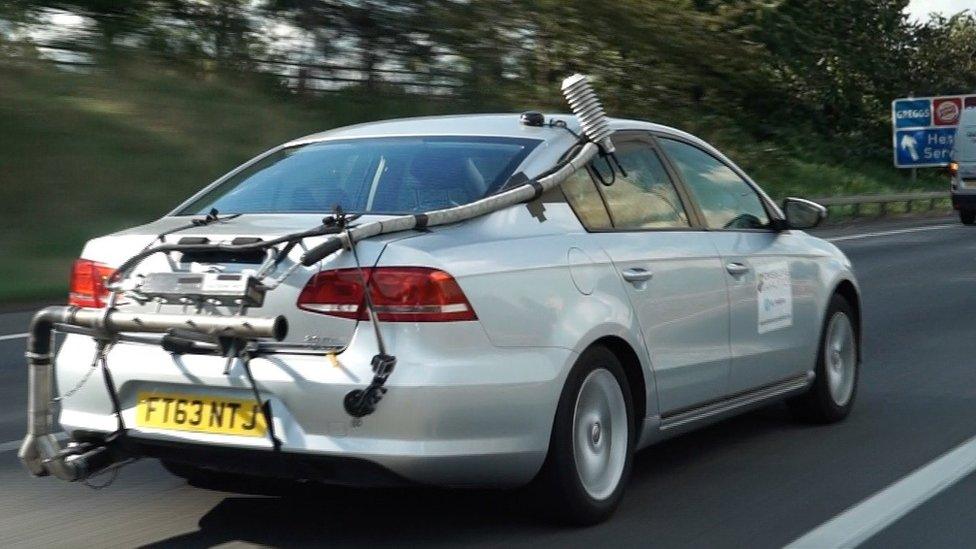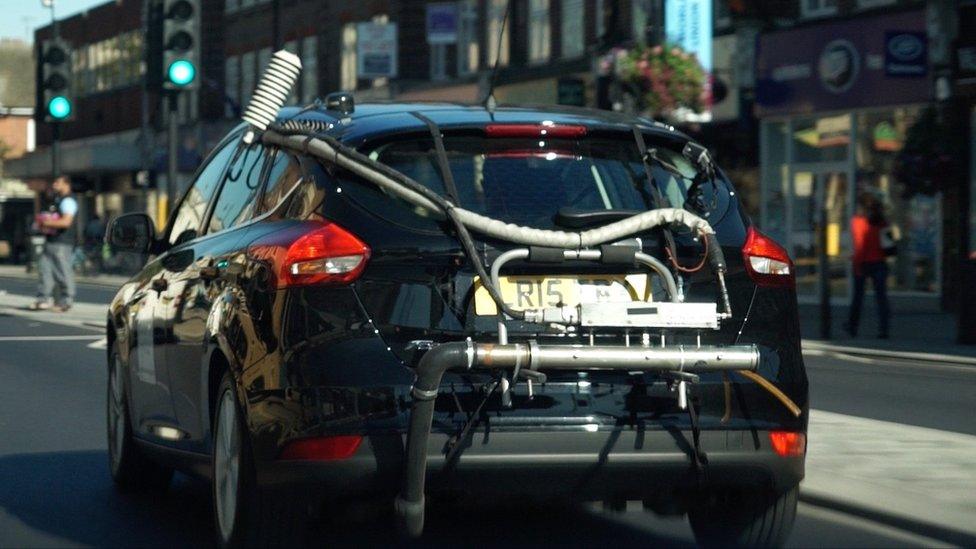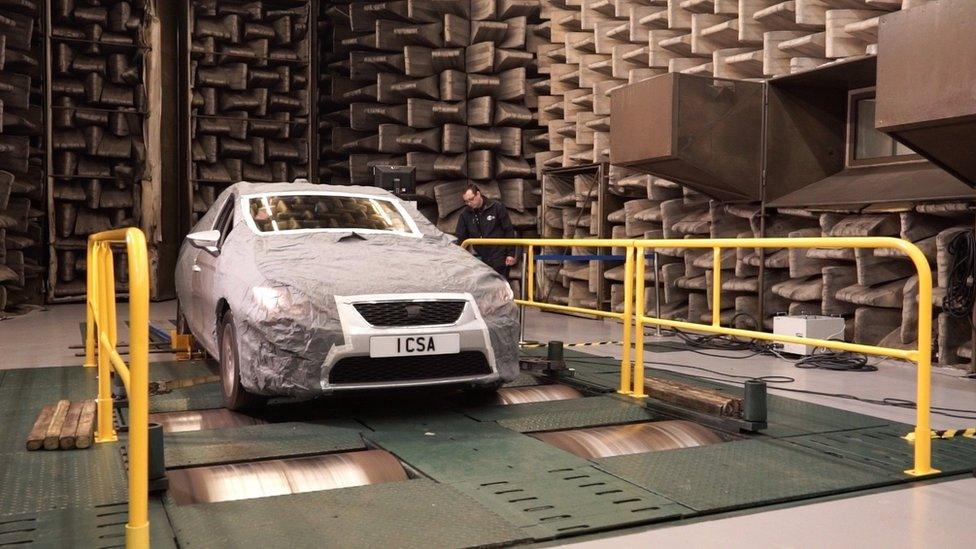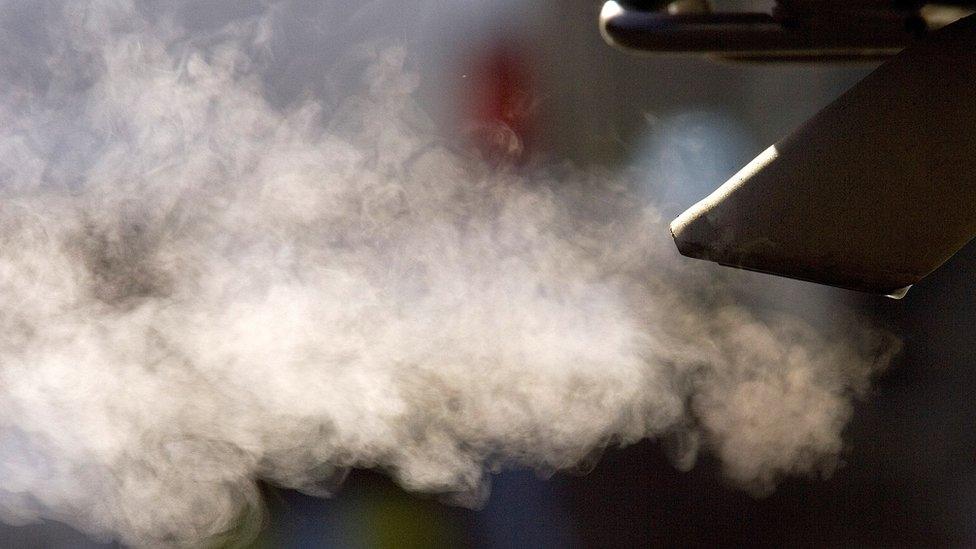Putting car emissions to the test
- Published
The BBC's Richard Westcott reports on the results of road tests on a VW model (left) and a Ford Focus
When you buy a car, you get fuel efficiency and emissions figures that are taken from strict EU laboratory tests.
But how realistic are they?
Last month it emerged that Volkswagen had installed software in some of its vehicles that would make its diesel engines cleaner when they sensed that the car was in a testing lab.
It meant that the vehicles emitted between 10 and 40 times more pollutants in real world driving conditions than they did in testing.
But motoring organisations commented that many vehicles, even without such software, would give very different results in the lab compared with on the road.
We asked independent testers from Emissions Analytics to put a couple of diesel-powered cars through their paces.
We chose a two litre Volkswagen, because it is the company at the centre of the scandal, and a 1.5 litre Ford Focus, which according to DVLA figures is the second most popular diesel car on Britain's roads today (after the VW Golf).
We are not suggesting that either of these cars is cheating in any way.
The test recreates the way people actually drive around town - often at low speeds and in traffic, but with the odd fast stretch.

The kit measures Nitrogen Oxide, often called NOx - one of the key pollutants from diesel engines. It also checked the fuel efficiency.
Engines have to meet European emissions regulations based on when they were built. The VW Passat that was tested was a slightly older model, so it had to meet the less stringent Euro 5 requirements. The newer Ford Focus had to meet the tougher Euro 6 standards.
Our results
In the tests conducted for the BBC, the VW emitted 0.664g of NOx per km, which is a touch under four times the regulated limit of 0.18g under the Euro 5 rules.
It managed 41.7 miles per gallon in urban testing, which is close to its published urban fuel efficiency of 44.8 mpg.
The Ford emitted 0.422g of NOx per km, which is more than five times the regulated limit of 0.08g under the Euro 6 rules.
It managed 47 miles per gallon in urban testing - well below its published urban fuel efficiency of 65.7 mpg.

So our cars were four or five times over emissions limits. The cars equipped with so-called defeat devices in America were as much as 40 times over.
But it turns out our results were very much in line with what the testers would have predicted.
"On average cars are polluting four times more than you should expect," says Jane Thomas from Emissions Analytics.
"The older cars are worse, the newer diesel engines are doing better. We've found four out of 60 so far that have met their official figures."
Perfectly flat road
So why the big difference? Cars are not required to pass tests on a real road, but are tested in a lab.
"When you're driving on the road you're having to go up and down hills, you're travelling around corners, you're accelerating hard - all these things burn fuel," says Paul Wilkinson from the CSA automotive testing lab.
"When you're in the lab you're driving down a perfectly flat, smooth road. You don't need any air con on, you don't need any lights or wipers or anything like that. There are no hills and you have to accelerate quite slowly because that's what's in the regulations."

The EU plans to introduce more realistic, real road testing in the next few years, but for now carmakers only have to meet lab test requirements.
VW chose not to respond to our results.
Ford did reply, saying that their emissions tests are "fully in line with regulations".
And the company stressed that the Focus, like all Ford vehicles, "does not have a so-called defeat device".
It also says it supports the plans to introduce real road testing across Europe.
- Published24 September 2015
